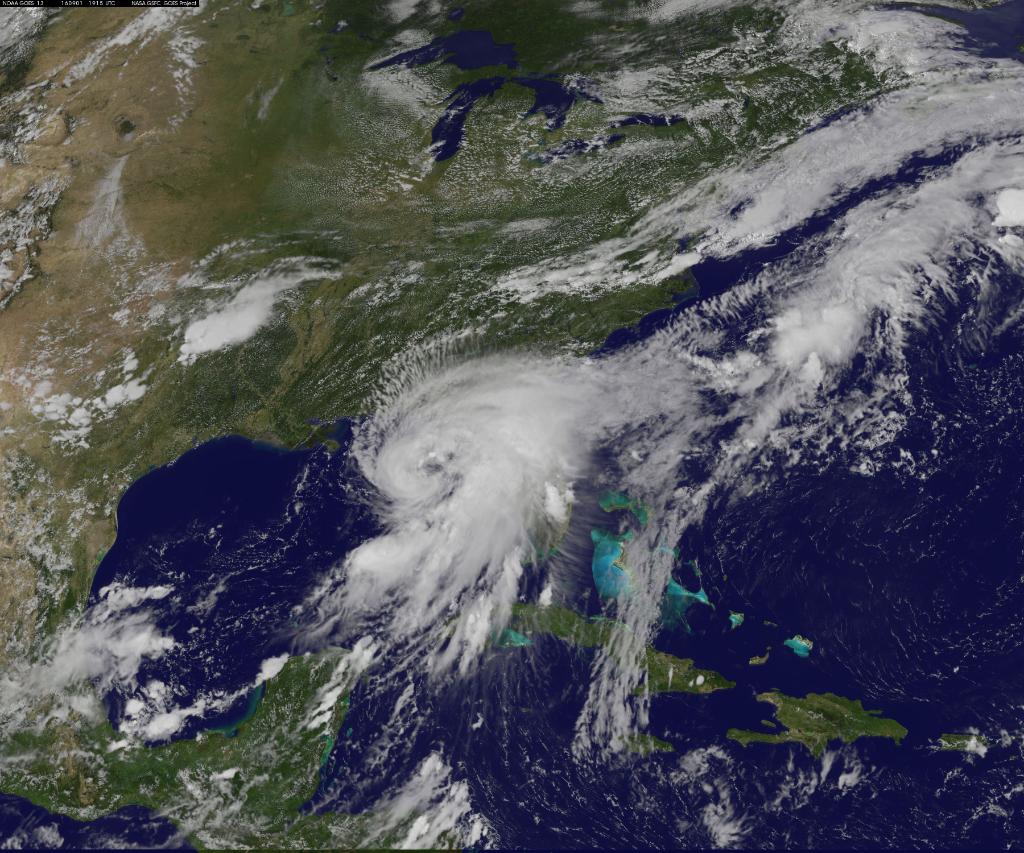
Tropical Storm Hermine strengthened into a hurricane Thursday and steamed toward Florida’s Gulf Coast, where people put up shutters, nailed plywood across store windows and braced for the first direct hit on the state from a hurricane in over a decade.
The National Hurricane Center said the storm’s winds reached about 75 mph in the afternoon, just above the 74 mph hurricane threshold.
Hermine was expected to blow ashore late Thursday or early Friday along the state’s Big Bend – the mostly rural and lightly populated corner where the Florida peninsula meets the Panhandle – then drop back down to a tropical storm and push into Georgia, the Carolinas and up the East Coast with the potential for drenching rain and deadly flooding.
Florida Gov. Rick Scott warned of the danger of strong storm surge, high winds, downed trees and power outages, and urged people to move to inland shelters if necessary and make sure they have enough food, water and medicine.
“This is a life-threatening situation,” Scott said. “It’s going to be a lot of risk. Right now, I want everybody to be safe.”
Scott added that 6,000 National Guardsmen in Florida are ready to mobilize after the storm passes. The governors of Georgia and North Carolina declared states of emergency.
As of 5 p.m. EDT, Hermine was in the Gulf of Mexico, centered about 85 miles south of Apalachicola, Florida, and was moving northeast at about 14 mph. Forecasters said it would strengthen slightly before blowing ashore but would still be only a Category 1 hurricane, meaning a wind speed of between 74 and 95 mph.
Projected rainfall ranged up to 10 inches in parts of northern Florida and southern Georgia, with 4 to 10 inches possible along the coasts of Georgia and the Carolinas by Sunday. Lesser amounts were forecast farther up the Atlantic Coast, because the storm was expected to veer out to sea.
Residents on some islands and other low-lying, flood-prone areas in Florida were urged to clear out. Flooding was expected across a wide swath of the Big Bend, which has a marshy coastline and is made up of mostly rural communities and small towns, where fishing, hunting and camping are mainstays of life.
Spyridon Aibejeris, 36, crouched in the mud, the seashore just a few feet away, helping some campers change flat tires on a trailer so that it could be evacuated from the Keaton Beach campground he and his family manage.
“We already moved about 40 of them as fast as we could,” he said. He sent his wife and daughter into the nearby town of Perry. “I’ve heard 80 mph winds are coming. It could rip siding off my house.”
Florida’s governor ordered many state government offices to close at noon, including those in the state capital of Tallahassee, home to tens of thousands of state employees. The city, roughly 35 miles from the coast, has not had a direct hit from a hurricane in 30 years.
The last hurricane to strike Florida was Wilma, a powerful Category 3 storm that arrived on Oct. 24, 2005. It swept across the Everglades and struck heavily populated south Florida, causing five deaths in the state and an estimated $23 billion in damage.
On Thursday, residents were out in force preparing for the storm, and stores began running low on bottled water and flashlights. City crews struggled to keep up with demand for sand for filling sandbags.
On Cedar Key, a small island along the Big Bend, about a dozen people went from storefront to storefront, putting up shutters and nailing pieces of plywood to protect businesses from the wind.
One of them, Joe Allen, spray-painted on plywood in large black letters: “Bring it on, Hermine.” Despite the bravado, he said, “I’m worried. You can never fully protect yourself from nature.”
Chris Greaves and family members stopped in Tallahassee to pick up sandbags for his garage and the church they attend. Greaves said he lived in South Florida when Hurricane Andrew devastated the area in 1992. While he said he doesn’t expect the same kind of widespread damage, he warned that tropical weather is “nothing to mess with.”
In South Carolina, Friday night high school football games in many areas were moved up to Thursday night because Hermine was expected to bring heavy rain on Friday.
The storm is expected to flood streets in the Charleston area, which can see flooding at high tide even on sunny days.
—
Associated Press writers Freida Frisaro and Curt Anderson in Miami; Jason Dearen in Perry, Florida; Gary Fineout in Tallahassee, Florida; Jeff Martin in Atlanta; and Bruce Smith, in Charleston, South Carolina, contributed to this report.


